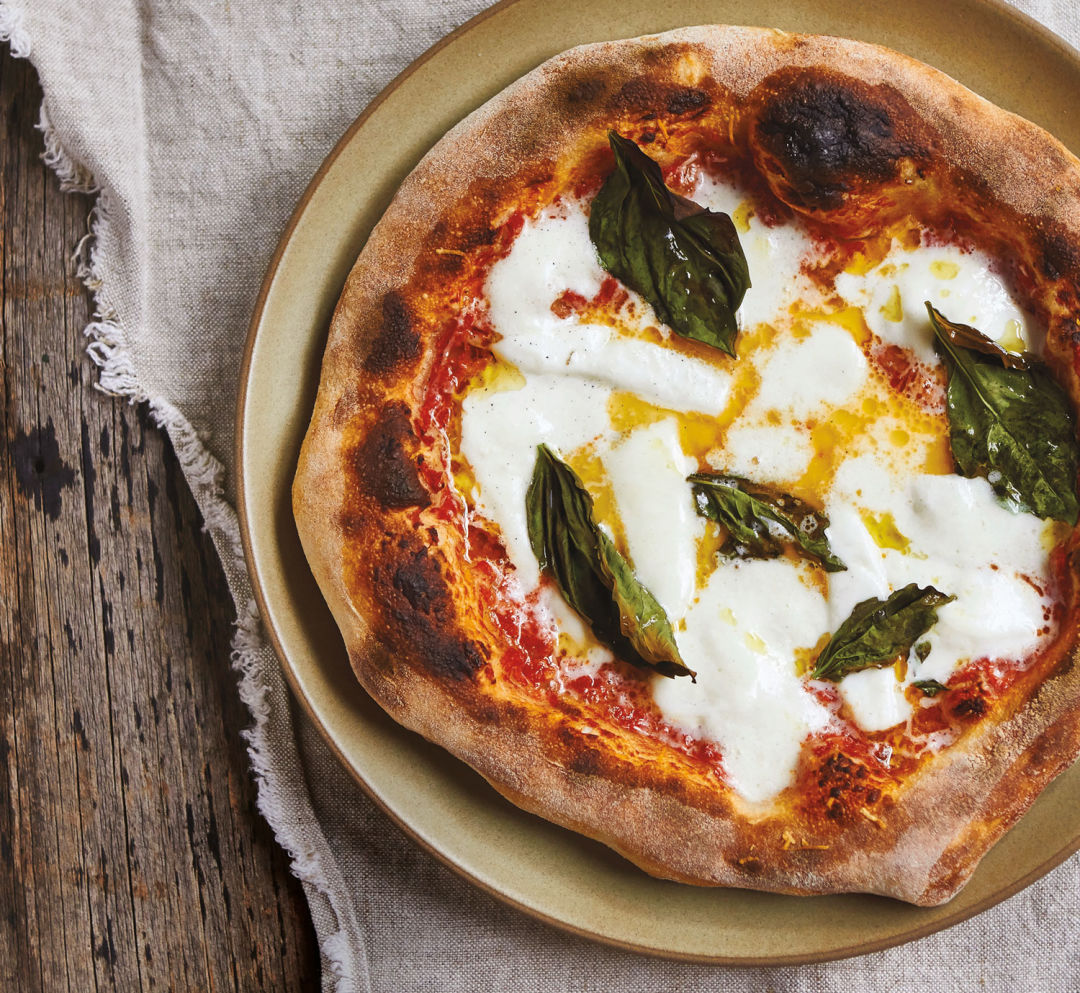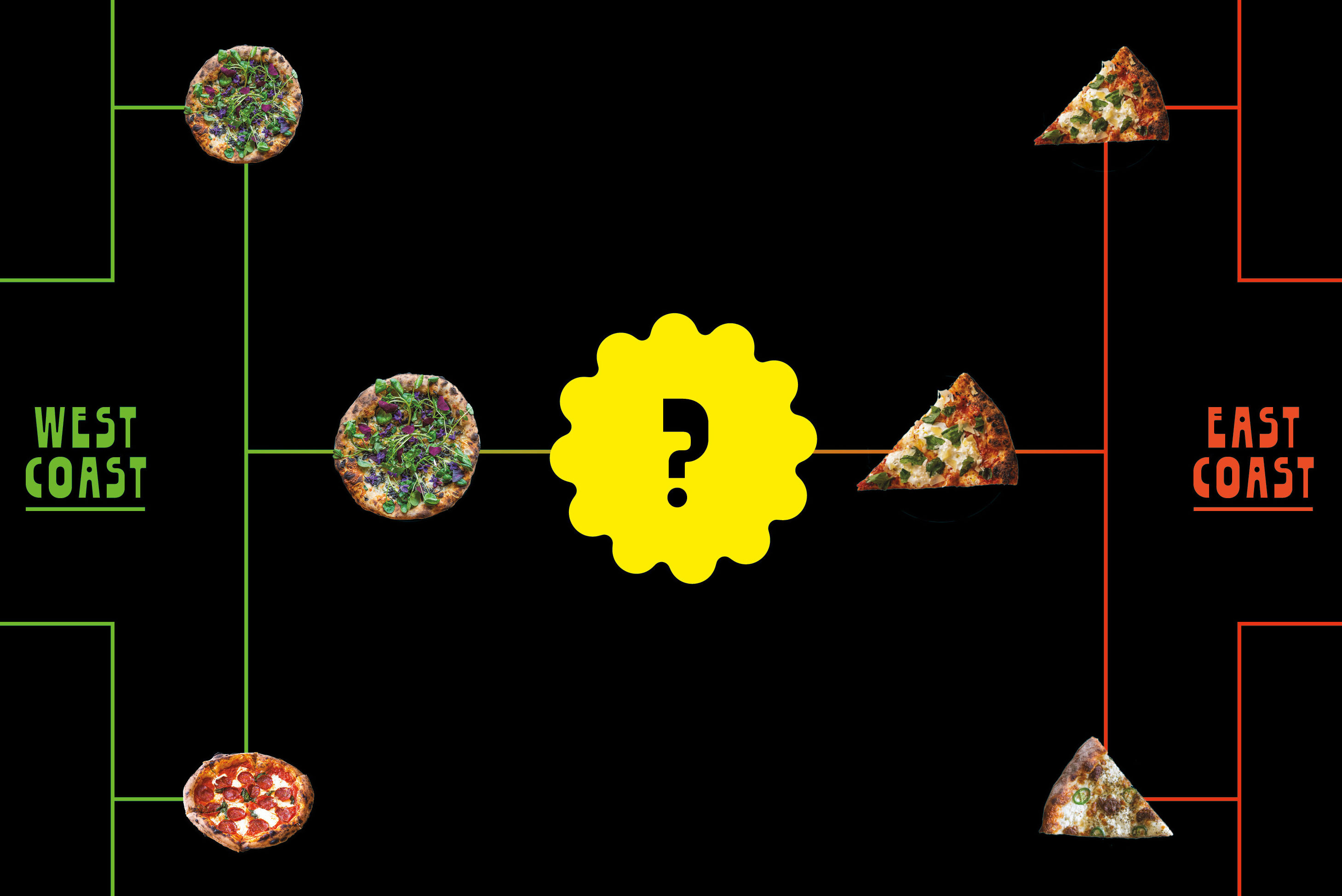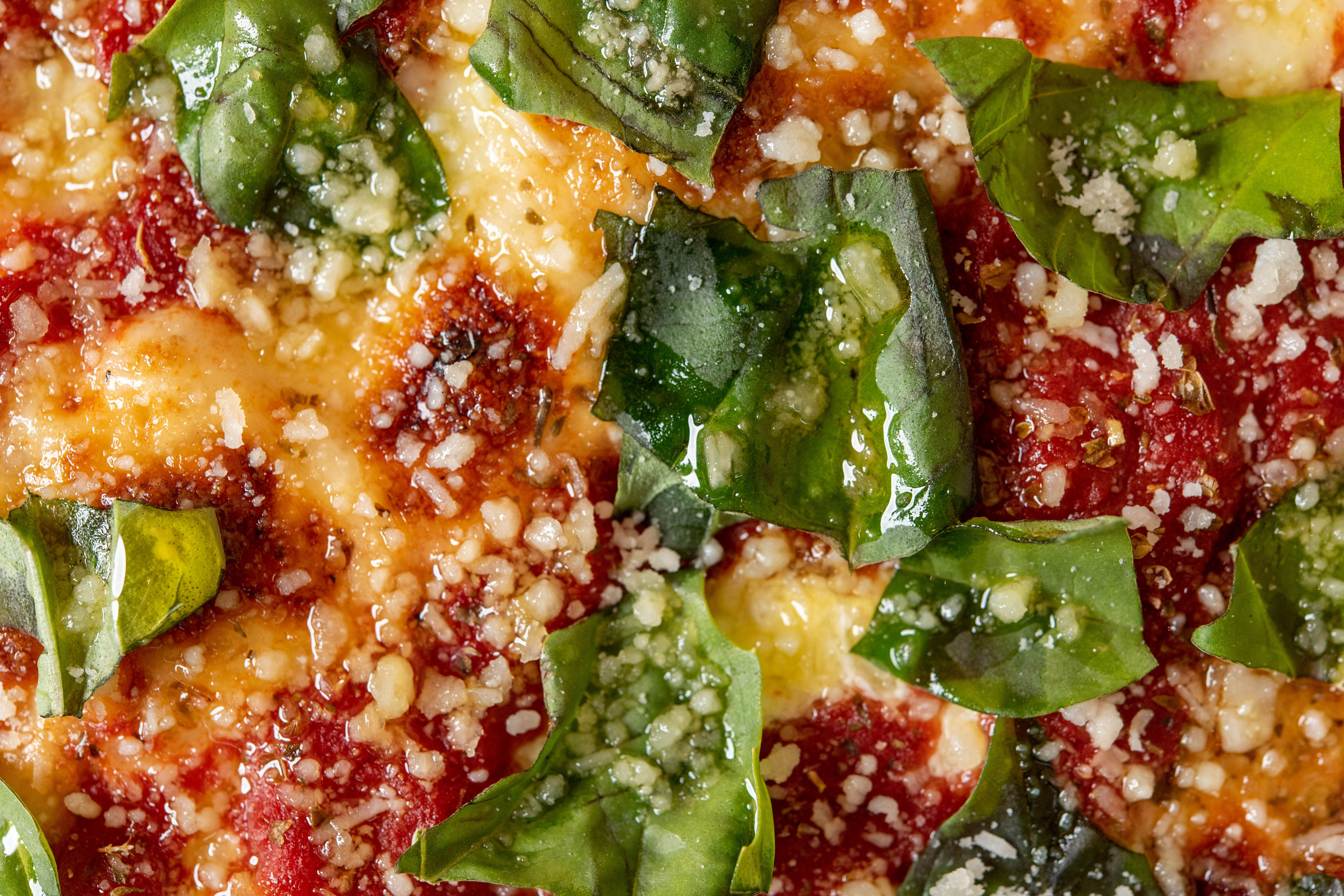Make the Margherita from Ken's Artisan Pizza at Home

Image: Alan Weiner
Ken Forkish knows a thing or two about pizza. In 2006, he opened Ken’s Artisan Pizza, which quickly became one of the Portland’s essential pie spots. Seven years later, he won a James Beard Award for his bread-baking tome, Flour Water Salt Yeast, with 57 pages devoted to pizza and focaccia. And yet, when describing early research for his latest book, The Elements of Pizza, Forkish admits, “I kind of had my ass handed to me. I asked myself, who am I to even think I could represent what pizza is all about?” (When Forkish visits Enzo Coccia, perhaps the most celebrated pizzaiolo in Naples, Coccia tells him definitively and forcefully: “Making pizza is not the same as making bread.”)
It takes guts to admit what you don’t know. Arriving in April from 10 Speed Press, The Elements of Pizza is Forkish’s humble backpedal into the soul and science of pie making, starting with its birthplace in Naples and ending in the cradle of American pizza craft, New York City. Forkish has approached the iconic Italian staple in much the same way he approached bread in FWSY: you are unlikely to find a more scrupulous examination of the art and history of pizza in the modern cookbook canon. And Forkish’s pizza rebirth is an important lesson for us all, that “the more you know, the more you know you don’t know.”
The Elements of Pizza Highlights
GET SCHOOLED
Between adages and techniques, Forkish transports readers to ancient pie times. Did you know the first pizzas were baked for the working class, anointed with only cheese and lard? And King Ferdinand I of Naples binged on 18th-century pizza behind his wife’s back?
PIE-OLOGY
New York, Neapolitan, and deep dish are not the only games in town. Say hello to the cracker-thin pizza Romana, racetrack-shaped strip pizza, and American bar pizza. Forkish shares techniques for making the perfect version of each and, most important, shows us how to spot an imposter.
DOUGH BOY
Expect no less than down-to-the-milligram exactitude from this baking master. The conversation roams from hydration percentages to why you should always use hyperrefined “doppio zero” flour over the standard all-purpose. Critically, Forkish walks us through his 15-page process for making a batch of dough, including every pinch, stretch, tuck, and rotation needed to make a pliable, silky bundle.
Ken’s Pizza Margherita
Makes one 12-inch pizza
- 1 dough ball*
- 1/4 to 1⁄3 cups Basic Tomato Sauce**
- Extra-virgin olive oil
- A scant 1⁄4 cup grated Pecorino Romano or Parmigiano-Reggiano cheese
- 3 1⁄2 to 4 ounces fresh whole-milk mozzarella cheese (fior di latte) or brine-packed mozzarella di bufala, sliced into short strips about 1⁄2 inch thick
- 3 to 5 fresh whole basil leaves
1) If you use a dough recipe that calls for refrigeration, remove your dough ball(s) from the refrigerator about 60 to 90 minutes before baking pizza. Put your pizza steel or stone on an upper rack in your oven no more than 8 inches below the broiler. Preheat the oven to 550°F for 45 minutes.
2) Set up your pizza assembly station. Give yourself about 2 feet of width on the countertop. Moderately flour the work surface. Position your wooden peel next to the floured area and dust it lightly with flour. Have the sauce, oil, cheeses, and basil at hand, with a ladle or large spoon for the sauce.
3) To shape the pizza, put the dough ball on the floured work surface and flip to coat both sides. Leaving about a ½ inch of the outer rim un-deflated, punch down the middle with your fingertips, pushing the air toward the rim of the disk, then flip the dough over and repeat. Using floured hands, grab the rim at about the 10 o’clock and 2 o’clock positions and lift so the crust hangs down vertically; preserve the outer rim by placing your thumbs about a 1⁄2-inch from the edge. Let gravity pull the rest of the dough down to stretch it. Run the rim between your hands, working all the way around the circumference of the dough a couple of times. Next, make two fists and position them just inside the rim, with the crust still hanging vertically. Gently stretch and turn the dough repeatedly, letting the bottom of the dough pull down.
4) Transfer the disk of pizza dough to a floured peel and run your hands around the perimeter to relax it and work out the kinks.
5) Spread the tomato sauce over the dough to within ½ inch of the edge, smoothing it with the back of the spoon or ladle. Turn off the broiler, then gently slide the pizza onto the pizza stone or steel. Close the oven door and change the setting to bake at 550°F. Let the pizza bake for about 4 minutes, until the rim is just starting to turn golden. Use a pair of tongs to remove the pizza onto a plate. Drizzle a spoonful or so of olive oil on top of the pizza, then sprinkle the grated pecorino evenly over the sauce. Layer the mozzarella and basil leaves evenly over the pizza. Using your hands, place the pizza back onto the pizza steel or stone and continue baking for 1 to 2 minutes.
6) Change the oven setting from bake to broil and let the pizza bake until the cheese is softly melted and the crust is golden with spots of brown and a few small spots of char, about 2 minutes (check it after 1 minute to be safe). Use tongs or a fork to slide the pizza from the pizza steel or stone onto the plate. Drizzle a small amount of extra-virgin olive oil over the pizza and serve whole or sliced in half.
VARIATION Add sliced cherry tomatoes as soon as this pizza comes out of the oven for a margherita “extra.”
* This recipe works best with the dough from The Elements of Pizza, formulated with specific flour, water, yeast, and temperatures in mind. If you choose to make your own dough or purchase it from a grocery store, be prepared for different results.
** Basic Tomato Sauce
Makes 3 cups, enough sauce for seven, 12-inch pizzas
Pour the entire contents 1 can (28-ounces) whole peeled tomatoes into the blender. Add 1 1 ⁄ 2 tsp fine sea salt. Pulse on the lowest speed setting very, very briefly, just until the tomatoes are blended. It will keep for 1 week in the refrigerator.




